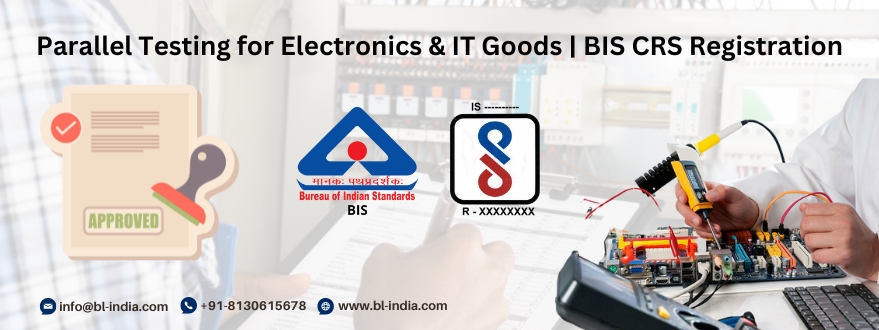
The Bureau of Indian Standards (BIS) has recently introduced parallel testing for electronics and IT products, aiming to streamline the compliance process and potentially save 4 to 13 weeks, as indicated by an industry representative. Initially, guidelines for parallel testing were released on 19 December 2022, focusing on Mobile Phones in a pilot project lasting six months.
Despite the extension of the pilot project for another six months and the inclusion of two additional product categories—Wireless Earphones/Headphones and Laptop/Notebook/Tablet—the number of applications remained low. In response, BIS, alongside industry stakeholders and test agencies, convened a virtual meeting to address the issue.
The outcome was unanimous support for the integration of parallel testing as a permanent scheme for all products. Subsequently, on January 09, 2024, BIS officially announced the conversion of the pilot project into a permanent scheme.
The Bureau of Indian Standards has expanded the scope of Parallel Testing to encompass "All product categories" covered by the Compulsory Registration Scheme (CRS). It's worth noting that participation in Parallel Testing remains entirely voluntary for manufacturers.
While this initiative offers a streamlined and expedited compliance pathway, manufacturers retain the flexibility to opt for sequential application submission if preferred. This blog explores the intricacies of BIS Parallel Testing, shedding light on its significance, benefits, and guidelines for implementing it.
The Bureau of Indian Standards Parallel Testing is a crucial aspect of conformity assessment for electronics and IT goods in India. It ensures that certain products comply with the relevant Indian standards, safeguarding consumers against substandard or unsafe products.
Parallel testing involves the verification of products by both the manufacturer's laboratory and an independent laboratory recognized by the BIS. The objective is to ensure consistency and reliability in testing procedures and results. It acts as a quality control measure, providing an additional layer of assurance to consumers and regulatory authorities.
Under the BIS Compulsory Registration Scheme, specific products must undergo rigorous safety testing and acquire BIS Registration before their introduction into the Indian market. This stringent process is designed to uphold predefined standards, fostering consumer safety and satisfaction.
However, the conventional testing framework often encounters challenges, with the testing phase being notably time-consuming. Delays in registration can significantly impact product launches and market entry. In response to these challenges, parallel testing emerges as a strategic imperative. It offers a streamlined approach to expedite the testing phase and align with the stringent deadlines stipulated by the BIS Registration.
This methodology emphasizes the simultaneous execution of multiple tests, effectively reducing registration timelines and ensuring a prompt and efficient compliance process. By embracing parallel testing, manufacturers can navigate the regulatory landscape with agility while upholding the highest standards of product quality and safety.
There are several benefits of Parallel Testing for BIS Registration, such as:
The guidelines for the implementation of parallel tests are outlined in Registration/Guidelines RG: 01, dated December 15, 2022, concerning "Guidelines for Grant of License (GoL) under Conformity Assessment Scheme II of Schedule II of the BIS (Conformity Assessment) Regulations, 2018," along with Registration Guidelines RG: 01, dated December 16, 2022.
These guidelines facilitate the parallel testing of electronic products encompassed by the BIS Registration. They are voluntary in nature, allowing manufacturers to continue submitting applications for registration to BIS sequentially as per the existing procedure.
Under these guidelines, all components mandated to be registered under the CRS can undergo parallel testing in one of the BIS-approved laboratories. In parallel testing, the laboratory initiates testing of the first component and issues a test report. This report number, along with the laboratory's name, is then incorporated into the test report of the subsequent component. This process is repeated for subsequent components until the final product is tested, ensuring efficient coordination and consistency throughout the testing phase.
The limitations of BIS Parallel Testing under BIS Registration include:
In conclusion, as we delve into the intricacies of BIS Parallel Testing for Electronics & IT Goods, it becomes evident that this innovative approach represents a paradigm shift in the compliance landscape.
While offering expedited registration process and enhanced market access, it also presents its own set of challenges and considerations. At Brand Liaison, our commitment to facilitating seamless BIS Registration processes aligns perfectly with the evolving needs of manufacturers seeking to navigate these complexities.
With our expertise and tailored solutions, we empower businesses to efficiently navigate the intricacies of parallel testing, ensuring compliance with regulatory standards while minimizing time and resource investments.